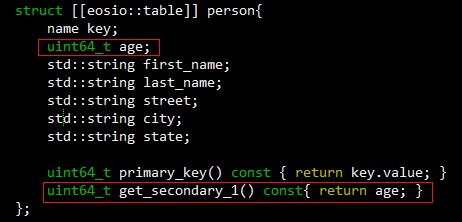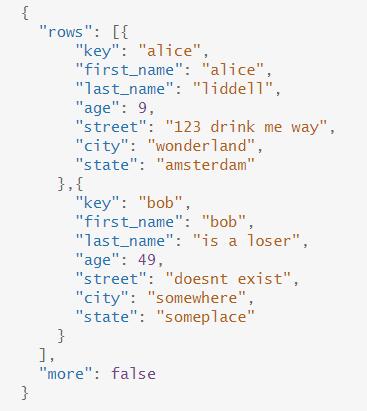【Secondary Indices】
EOSIO has the ability to sort tables by up to 16 indices. A table's struct cannot be modified when it has data in it. \
1、添加第二列索引 member 和 getter。
The secondary index needs to be numeric field, so a uint64_t was chosen for the age variable

2、Add secondary index to `addresses` table configuration
typedef eosio::multi_index<"people"_n, person, indexed_by<"byage"_n, const_mem_fun<person, uint64_t, &person::get_secondary_1>> > address_index;
1) indexed_by 是一个 struct.
2) first parameter set name of index as "byage"
3) the second type parameter as a function call operator should extract a const value as an index key.
3、compile & deploy
eosio-cpp -o addressbook.wasm addressbook.cpp --abigen cleos set contract addressbook /home/ubuntu/contracts/addressbook
4、Test
cleos push action addressbook upsert '["alice", "alice", "liddell", 9, "123 drink me way", "wonderland", "amsterdam"]' -p alice@active cleos push action addressbook upsert '["bob", "bob", "is a guy", 49, "doesnt exist", "somewhere", "someplace"]' -p bob@active
查看一下插入结果,注意--upper 10 是指定上限,即只查看索引值小于10的row.
cleos get table addressbook addressbook people --upper 10 \ --key-type i64 \ --index 2
上面命令会看到结果

参考:https://developers.eos.io/eosio-home/docs/secondary-indices



